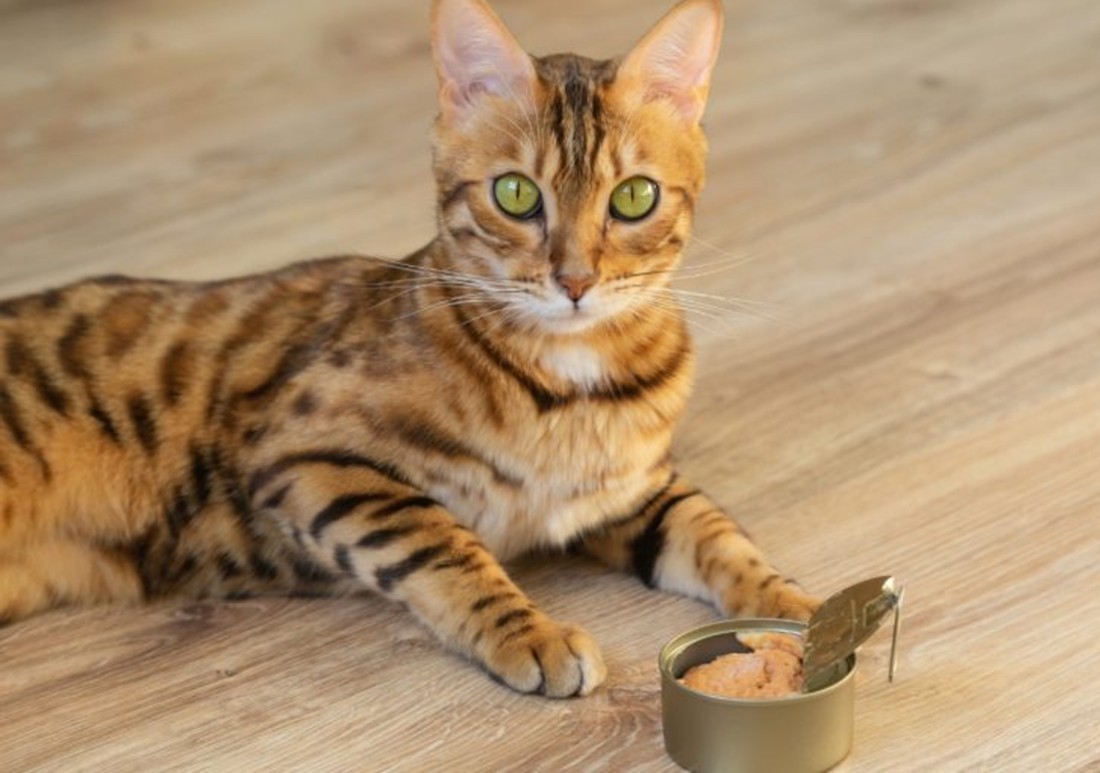Here’s How Much Wet Food To Feed a Cat

Feeding your cat a balanced diet appropriate for their needs is crucial for their overall health and well-being. While dry food is a common choice for many cat owners, incorporating wet food into their diet can offer several benefits. Determining the right amount of wet food to feed your cat, however, can be challenging.
In this blog post, we will guide you on how to determine the appropriate portion size of wet food for your cat based on factors such as age, weight, activity level, and overall health. By understanding their nutritional needs and considering individual factors, you can ensure that your cat receives the proper amount of wet food to maintain a healthy diet.
Assess Your Cat’s Specific Needs
Each cat is unique, and their dietary requirements may vary based on factors such as age, weight, activity level, and any specific health conditions. It’s recommended to consult your veterinarian to determine the appropriate portion size of wet cat food for your cat based on these factors.
Follow Feeding Guidelines
Most commercial wet cat food brands provide feeding guidelines on their packaging. These guidelines typically recommend serving sizes based on your cat’s weight. Start with the suggested portion size as a general guideline and adjust as needed based on your cat’s individual response.
Consider Your Cat’s Weight
If your cat is overweight or underweight, the amount of wet food they require may differ from the standard feeding guidelines. Cats that need to lose weight may require a smaller portion size, while underweight cats may need a larger portion to support healthy weight gain. Your veterinarian can help determine the appropriate portion size based on your cat’s weight goals.
Monitor Your Cat’s Body Condition
Regularly assess your cat’s body condition to ensure they are maintaining a healthy weight. Feel for their ribs and spine — there should be a thin layer of fat covering these areas without excessive padding. Adjust the portion size accordingly if you notice significant changes in your cat’s body condition.
Consider Activity Level and Age
Active and energetic cats typically require more calories to fuel their daily activities, while older or less active cats may require fewer calories. Take into account your cat’s activity level and age when determining the appropriate portion size of wet food.
Split Meals Into Multiple Portions
Instead of providing one or two large meals, consider splitting your cat’s daily portion of wet food into multiple smaller meals throughout the day. This approach can help prevent overeating, aid digestion, and keep your cat satisfied throughout the day.
Avoid Overfeeding
While wet food can be a delicious treat for your cat, it’s important to avoid overfeeding. Excessive consumption can lead to weight gain, obesity, and related health issues. Stick to the recommended portions and monitor your cat’s weight and overall health to ensure they receive the right amount of food.
It’s important to remember that feeding guidelines and portion sizes are general recommendations, and every cat is unique. Some cats may have specific dietary needs or health conditions that require a customized feeding plan. Consulting with your veterinarian is crucial to assess your cat’s individual needs and create a tailored feeding regimen. They can provide valuable insights into your cat’s nutritional requirements and help you make informed decisions about portion sizes and meal frequency.
Final Note!
Feeding your cat the appropriate amount of wet food is essential for their overall health and nutrition. Consider factors such as age, weight, activity level, and body condition when determining the optimal portion size. Follow the feeding guidelines provided by the manufacturer as a starting point and make adjustments based on your cat’s individual needs. Regular veterinary check-ups and consultations can also provide valuable guidance to ensure your cat receives a well-balanced diet and maintains a healthy weight. By providing the right amount of wet food, you can support your cat’s well-being and contribute to their long-term health.
Your Pet’s Best Interest, Always
At Pet Institute, we take pet care seriously. We're dedicated to transparency, impartiality, and the well-being of your pets in every article, review, and recommendation we provide. Our unwavering commitment to these principles ensures that you, our valued reader, always receive reliable and unbiased information. Let us be your trusted guide in the world of pet care and companionship.